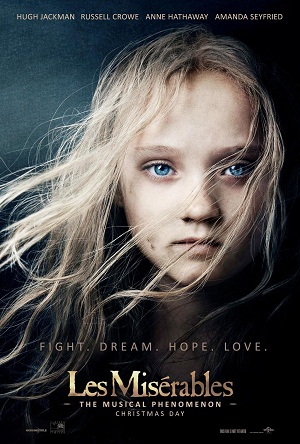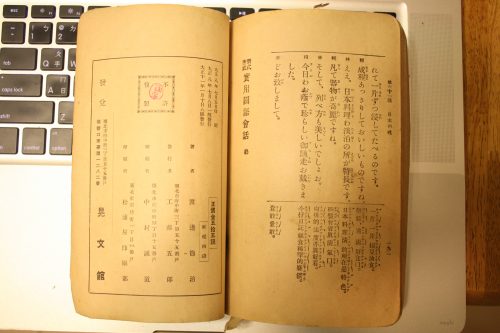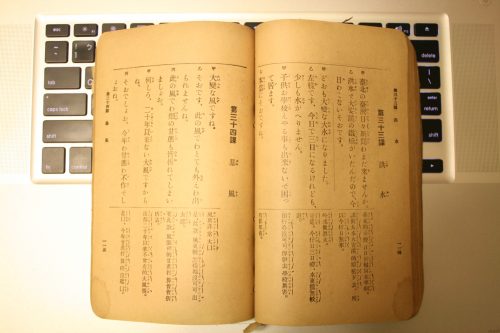
I finally was able to see Les Misérables last Friday. A few notes, from a person who had enjoyed the musical recently. No spoiler here.
- The movie and the musical are the different realizations of the same story, although they share the songs and (of course) the characters. I highly recommend anyone who have see either of them to see another.
- Pace: Movie features slower pace, more dialogs, which gives a better explanation of the story. However it made the story less intensive.
- Song selection: The song “Suddenly” appeared to be a new song composed exclusively for the movie. However, all of the original songs are either trimmed or shorten in the movie, except “I dreamed a dream” (featured in the teaser), where Anne Hathaway gave the breathtaking (and heartbreaking) performance. I would expect a director’s cut version coming within an year or so.
- Javert: As you may know, the essence of Les Misérables story is about the struggle between two aspects of justice — instead of justice v.s. evil. It’s a pity that will all the trimming, the storytelling of the movie failed to tell people Javert’s justice in great detail, resulting a unbalanced view of the two main characters.
- Sound mixing: Just like what you’ve heard in the teaser and the highlight sound track album, the songs are all mixed with vocal at the front position and lower volume of music. For me, it kind of prevent me from enjoy the sound track with earphone, but it allow the song to blend into movie scene and seamlessly go with the dialogs. It also allow more expression for the performer.
- Vocal scenes: Another unique aspect about the movie is how the vocal scenes if filmed. Basically, all the songs are filmed nothing but the actor/actress’s face and the blurry background. This allowed the viewer to concentrate on the expression of the performer.
- Live recording: As explained here in the extend first look intro, all of the vocal voices are recording live. All the effort on that has paid off, judging by the immense feeling it delivered to the audience.
- Mandarin Chinese subtitle: the movie wasn’t released until last Friday, which angered a lot of local Les Mis fans, including me. However, I can see that with the pushed back date, the translation is a lot better compare to literal translation I usually see in the theater. Subtitle was also carefully applied to the screen to avoid obscuring the performer’s face, something unseen in the theater previously too.
I might come up different thought if I could finish the novel itself; In the mean time, I highly recommend people going to the theater to at least know the story, and dive deeper if you would like know more.
終於在台灣上映的第一天去看了電影《悲慘世界》。在這裡寫一些感想和與之前看的音樂劇的比較:
- 雖然歌和角色是一樣的,電影和音樂劇是同一個故事的不同的呈現方式。強烈建議看過音樂劇的人去看電影,或是看過電影之後找機會看音樂劇。
- 步調:電影的步調比音樂劇慢,還有對話,所以故事解釋的比較清楚。但是感覺就沒有這麼緊湊。
- 選曲:《Suddenly》這首歌是電影的新曲,但其他音樂劇原有的音樂都被剪裁或是縮短了。唯一的例外是安.海瑟威的《I dreamed a dream》(這部預告用的曲)令人心碎的演出。之後應該會有導演完整版吧。
- Javert:熟悉故事的人會知道《悲慘世界》的精隨在於兩個「正義」代表的對抗,而不是一般的正邪對抗。電影很失敗的對故事的剪裁沒有把 Javert 心中的正義講的很清楚,導致兩個角色的不平衡。
- 混音:如果去電影院之前就看過預告或是聽過原聲帶專輯,就會發現歌曲的人聲都混得很前面,音樂也相對比較小聲。對我來說這樣的音樂用耳機聽起來很怪,但是到電影院就會發現它和對白以及電影運鏡很合。這種混音也讓演出者能表現更多表情。
- 運鏡:電影很獨特的一點是獨唱曲的運鏡方式。基本上畫面上只有表演者的臉,背景全部都是模糊的。看起來是故意讓聽眾能夠更專心的看演出者的表現。
- 現場錄音:在搶先看的影片有介紹,所有的歌曲都是拍攝現場錄音的。我覺得從電影帶來的感覺,這些功夫都達到了它的用意。
- 中文字幕:雖然說電影在台灣比其他國家慢,招致了很多粉絲(包含我)的抱怨,但是感覺起來因為這段時間,才讓代理商有機會把中文字幕修好:其他的電影都是上很粗淺的字面翻譯:可以看出來《悲慘世界》的字幕是精心處理過的。字幕在某些畫面也很小心的避開角色的臉,從來沒看過其他電影做過這種處理。
或許看完小說之後會有不同的想法。如果你沒有看過電影的話,強烈建議趁這個機會去看一下,至少了解一下故事,有興趣的話再看其他的。




